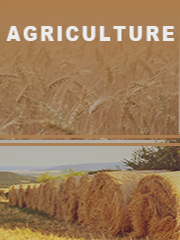Report overview
In agricultural field, polymers are widely used for many applications. Although they were used, in the first time, just as structural materials (inhert polymers), in the last decades functionalized polymers revolutionized the agricultural and food industry with new tools for several applications.
Smart polymeric materials and smart delivery systems helped the agricultural industry to combat viruses and other crop pathogens, functionalized polymers were used to increase the efficiency of pesticides and herbicides, allowing lower doses to be used and to indirectly protect the environment through filters or catalysts to reduce pollution and clean-up existing pollutants.
The Polymers in Agrochemicals industry can be broken down into several segments, PVP & Derivates, CMC, HEC, HPMC, HMHEC, MC, HPC, EC, Other, etc.
Across the world, the major players cover Ashland, Borregaard, DKS Co. Ltd, DuPont, NIPPON SHOKUBAI, Dow Chemical Company, and SE Tylose GmbH & Co. KG, etc.
This report aims to provide a comprehensive presentation of the global market for Polymers in Agrochemicals, with both quantitative and qualitative analysis, to help readers develop business/growth strategies, assess the market competitive situation, analyze their position in the current marketplace, and make informed business decisions regarding Polymers in Agrochemicals. This report contains market size and forecasts of Polymers in Agrochemicals in global, including the following market information:
Global Polymers in Agrochemicals Market Revenue, 2018-2023, 2024-2029, ($ millions)
Global Polymers in Agrochemicals Market Sales, 2018-2023, 2024-2029, (MT)
Global top five Polymers in Agrochemicals companies in 2022 (%)
The global Polymers in Agrochemicals market was valued at US$ 162.7 million in 2022 and is projected to reach US$ 234.6 million by 2029, at a CAGR of 5.4% during the forecast period. The influence of COVID-19 and the Russia-Ukraine War were considered while estimating market sizes.
Global key polymers in agrochemicals players include Borregaard, DKS Co. Ltd and Ashland etc. The top 3 companies hold a share about 67%. Asia-Pacific is the largest market with a share about 43%, followed by Europe and North America.
In terms of product, PVP and derivate is the largest segment with a share about 40%. And in terms of applications, the largest application is seed coating with a share about 45%.
We surveyed the Polymers in Agrochemicals manufacturers, suppliers, distributors and industry experts on this industry, involving the sales, revenue, demand, price change, product type, recent development and plan, industry trends, drivers, challenges, obstacles, and potential risks.
Total Market by Segment:
Global Polymers in Agrochemicals Market, by Type, 2018-2023, 2024-2029 ($ Millions) & (MT)
Global Polymers in Agrochemicals Market Segment Percentages, by Type, 2022 (%)
PVP and Derivates
CMC
HEC
HPMC
HMHEC
MC
HPC
EC
Others
Global Polymers in Agrochemicals Market, by Application, 2018-2023, 2024-2029 ($ Millions) & (MT)
Global Polymers in Agrochemicals Market Segment Percentages, by Application, 2022 (%)
Seed Coating
Soil Protection
Others
Global Polymers in Agrochemicals Market, By Region and Country, 2018-2023, 2024-2029 ($ Millions) & (MT)
Global Polymers in Agrochemicals Market Segment Percentages, By Region and Country, 2022 (%)
North America
US
Canada
Mexico
Europe
Germany
France
U.K.
Italy
Russia
Nordic Countries
Benelux
Rest of Europe
Asia
China
Japan
South Korea
Southeast Asia
India
Rest of Asia
South America
Brazil
Argentina
Rest of South America
Middle East & Africa
Turkey
Israel
Saudi Arabia
UAE
Rest of Middle East & Africa
Competitor Analysis
The report also provides analysis of leading market participants including:
Key companies Polymers in Agrochemicals revenues in global market, 2018-2023 (Estimated), ($ millions)
Key companies Polymers in Agrochemicals revenues share in global market, 2022 (%)
Key companies Polymers in Agrochemicals sales in global market, 2018-2023 (Estimated), (MT)
Key companies Polymers in Agrochemicals sales share in global market, 2022 (%)
Further, the report presents profiles of competitors in the market, key players include:
Ashland
Borregaard
DKS Co. Ltd
DuPont
NIPPON SHOKUBAI
Dow Chemical Company
SE Tylose GmbH & Co. KG
Shin-Etsu
Daicel Miraizu Ltd
Lotte Fine Chemical Co., Ltd
Tai'an Ruitai
Zhangzhou Huafu Chemical
Shanghai Yuking Water Soluble Material
Star-Tech Specialty Products Co., Ltd.
Jiaozuo Zhongwei Special Products Pharmaceutical
Xuzhou Liyuan
Outline of Major Chapters:
Chapter 1: Introduces the definition of Polymers in Agrochemicals, market overview.
Chapter 2: Global Polymers in Agrochemicals market size in revenue and volume.
Chapter 3: Detailed analysis of Polymers in Agrochemicals manufacturers competitive landscape, price, sales and revenue market share, latest development plan, merger, and acquisition information, etc.
Chapter 4: Provides the analysis of various market segments by type, covering the market size and development potential of each market segment, to help readers find the blue ocean market in different market segments.
Chapter 5: Provides the analysis of various market segments by application, covering the market size and development potential of each market segment, to help readers find the blue ocean market in different downstream markets.
Chapter 6: Sales of Polymers in Agrochemicals in regional level and country level. It provides a quantitative analysis of the market size and development potential of each region and its main countries and introduces the market development, future development prospects, market space of each country in the world.
Chapter 7: Provides profiles of key players, introducing the basic situation of the main companies in the market in detail, including product sales, revenue, price, gross margin, product introduction, recent development, etc.
Chapter 8: Global Polymers in Agrochemicals capacity by region & country.
Chapter 9: Introduces the market dynamics, latest developments of the market, the driving factors and restrictive factors of the market, the challenges and risks faced by manufacturers in the industry, and the analysis of relevant policies in the industry.
Chapter 10: Analysis of industrial chain, including the upstream and downstream of the industry.
Chapter 11: The main points and conclusions of the report.
